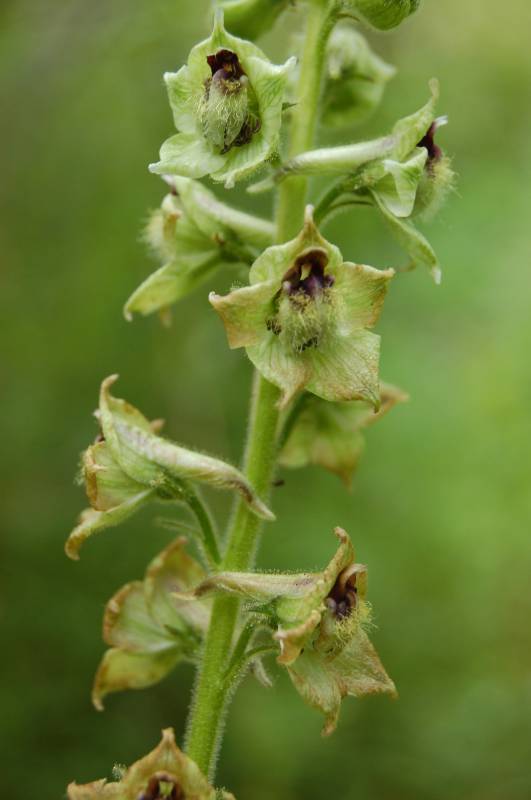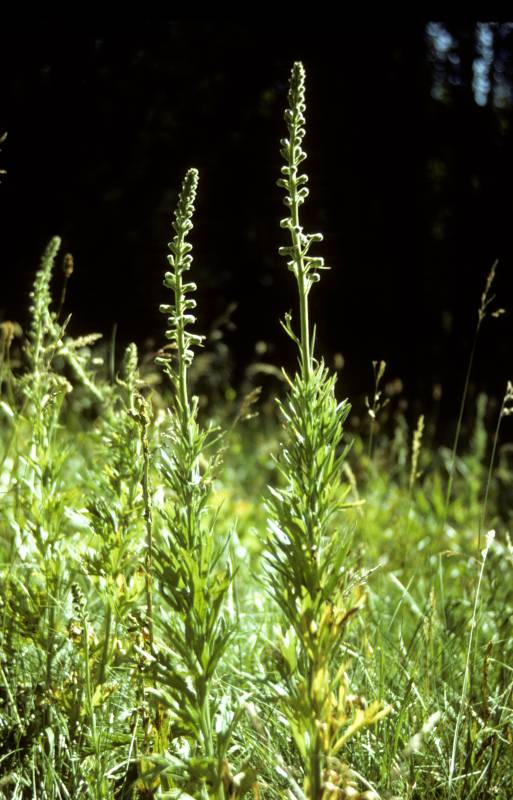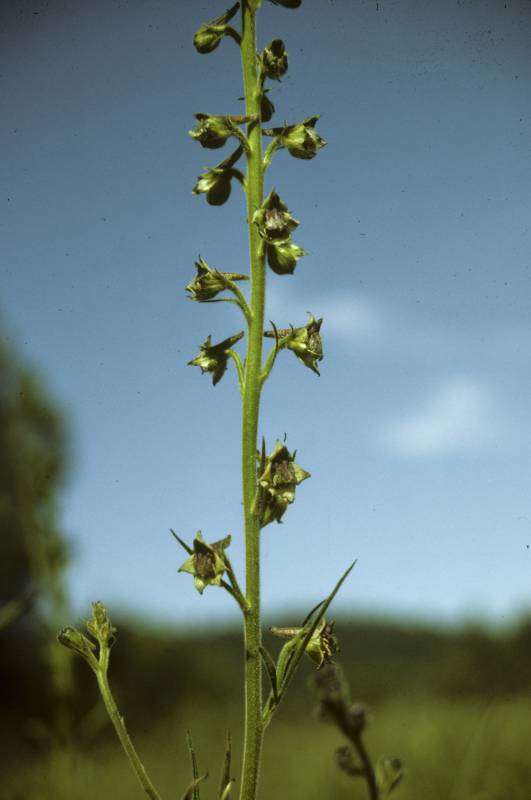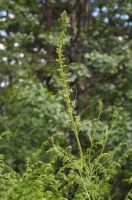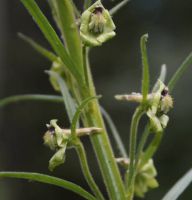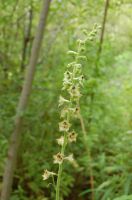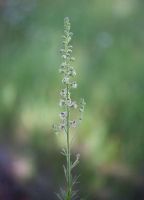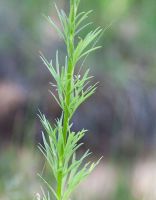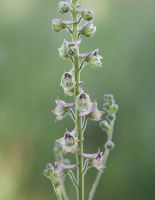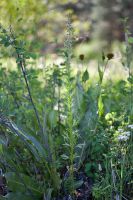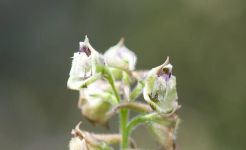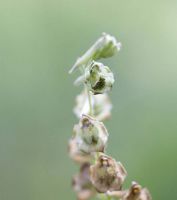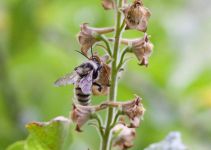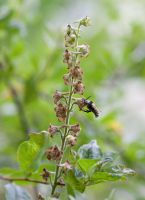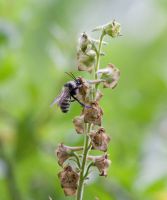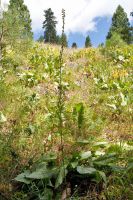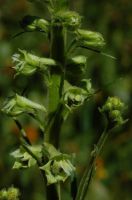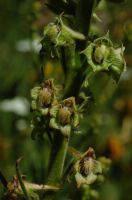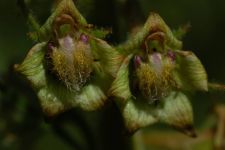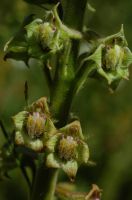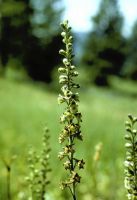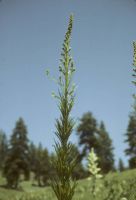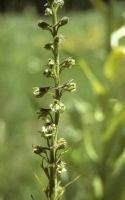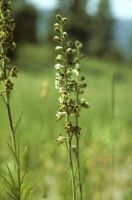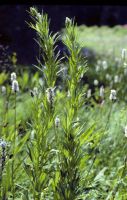Distribution: Occurring east of the Cascades crest in Washington, where endemic to the Wenatchee Mountains of Chelan and Kittitas counties.
Habitat: Boggy meadowlands.
Flowers: June-July
Origin: Native
Growth Duration: Perennial
Conservation Status: Threatened in Washington (WANHP)
Pollination: Bumblebees, bees, flies, butterflies, hummingbirds
Stout perennial from a short rhizome, the several hollow stems 8-12 dm. tall, glabrous below but with copious stalked, yellow glands above and throughout the inflorescence.
Basal and lower cauline leaves long-petiolate, the blades up to 10 cm. broad, divided into 3 main wedge-shaped lobes, these once or twice cleft into oblong-rounded segments; mid-cauline leaves short-petiolate and overlapping, nearly erect, divided into narrow, acute segments, abruptly transitional to the lower leaves, but gradually transitional to the linear, entire, bract-like upper leaves.
Inflorescence usually a simple, narrow raceme, the pedicels shorter than the flowers; sepals 5, purplish, but strongly streaked with yellow or greenish-yellow, oblanceolate, glandular, 7-11 mm. long; spur thick, straight, 7-10 mm. long; petals 4, yellowish or purple, the lower pair densely soft-hairy, equaling the sepals; stamens numerous; pistils 3.
Follicles 6-8 mm. long, erect, densely glandular-pubescent.
Publication: Proc. Biol. Soc. Wash. 11: 39. 1897.
PNW Herbaria: Specimen records of Delphinium viridescens in the Consortium of Pacific Northwest Herbaria database
WA Flora Checklist: Delphinium viridescens checklist entry
OregonFlora: Delphinium viridescens information
E-Flora BC: Delphinium viridescens atlas page
CalPhotos: Delphinium viridescens photos

